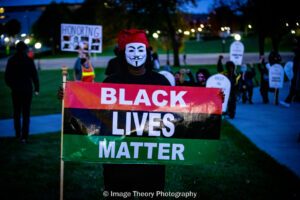
Editor’s note: FAMU public relations major Samirra Demry is a native of Minneapolis and is at home this fall taking courses remotely.
MINNEAPOLIS — The state of Minnesota and the Twin Cities of Minneapolis and St. Paul pride themselves on being highly ranked as one of the best places to live in the United States. However, according to USA Today, the Twin Cities are ranked fourth in the nation for one of the worse cities (and/or metro areas) for Black Americans.
On May 26, the video recording of the Minneapolis police killing George Floyd showed exactly how unjust Black people are treated in the state. The video recording caught global attention, and reached the hearts and souls of hundreds of thousands of people.
For Minneapolis residents, this incident was especially difficult. That day, Minneapolis residents of many races came together to protest racial injustice and police brutality.
The protest had a domino effect that spilled over to other major cities in the United States and even countries overseas.
Yet, life has not been the same for the city of Minneapolis and its residents. Many had mixed feelings about looting, burning of businesses and any other acts deemed to be non-peaceful.
“Certain parts of the north side [of Minneapolis] look like a waste land. Businesses are boarded up and/or burned down, it’s a mess,” said longtime resident Joanne Brush.
Other residents believe their options have run out and no one is listening. “I personally don’t have a problem with the looting or anything else as long as folks are staying alive. If this needs to be done to make progress, so be it,” said Brittany White, a young Minneapolis resident.
Since Floyd’s death on Memorial Day, Minneapolis residents have been keeping a close eye for updates on the case when it comes to the officers involved in the incident, especially Derek Chauvin. On Oct. 7, the primary officer involved, Chauvin, was released after posting $100,000 through a Minneapolis bail bond agency. Hours later, Gov. Tim Walz of Minnesota announced that he would be mobilizing members of the National Guard as a precaution.
The following day, Oct. 8, multiple organizations came together and held a protest that they called “The Secret March.”
During this march, protesters came with props including headstones of victims who’ve died at the hands of the police, body bags, and blood dripping from themselves.
“The cinematic nature of this march was off the charts … we were met with over 150 officers in riot gear surrounding the Capitol building,” said Kenny Erickson, a photographer at the march. The protest ended peacefully without any injuries or arrests.
Chauvin has since been allowed to leave Minnesota due to “safety concerns,” a judge said. Chauvin’s team has requested a motion to have his trial separate from the other three officers involved, as well as held in a city outside of Minneapolis and Hennepin County.
As of Oct. 22, a judge has dropped the third-degree murder charge against Chauvin, but all other charges remain and a trail is set for March 2021.